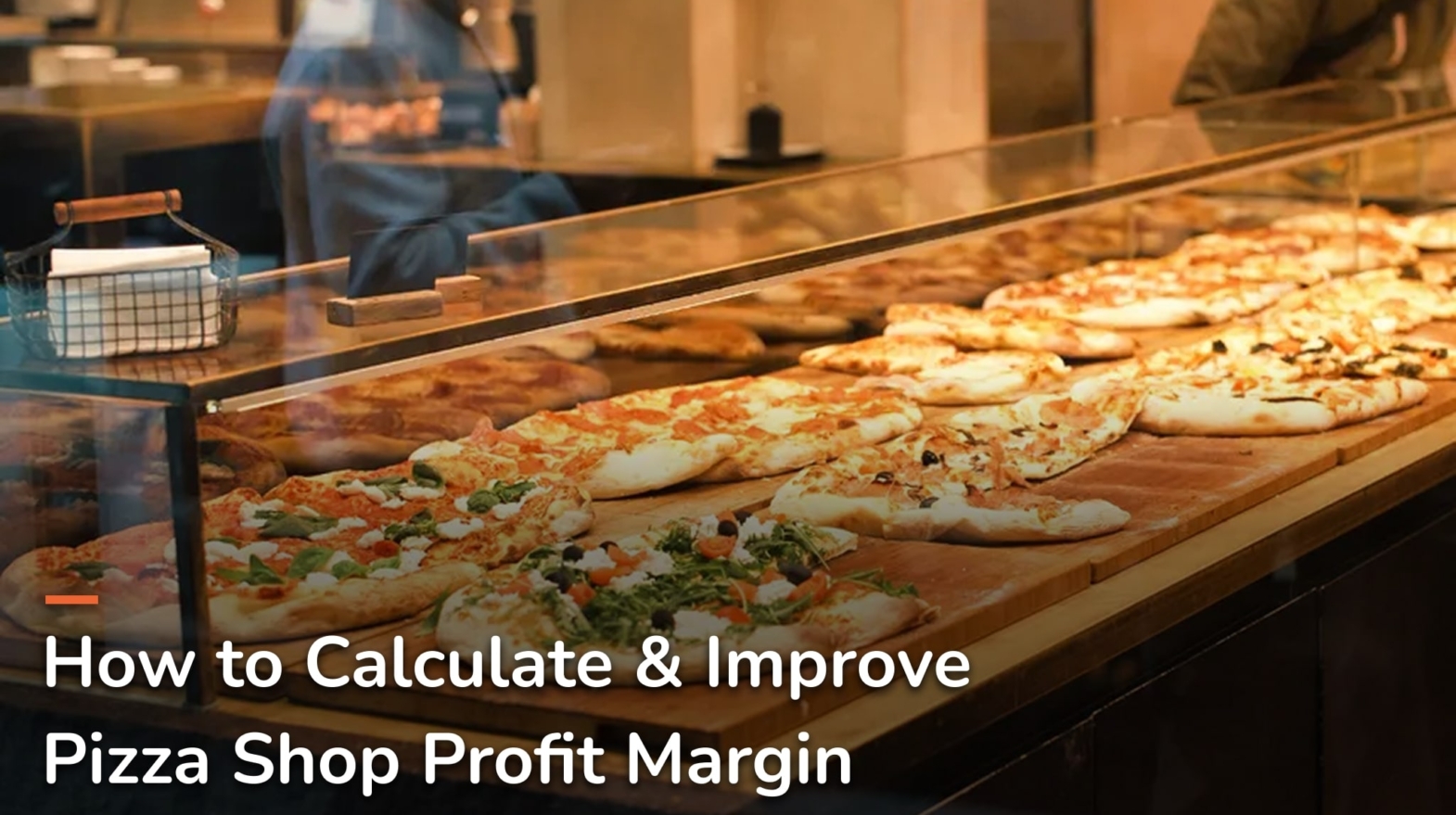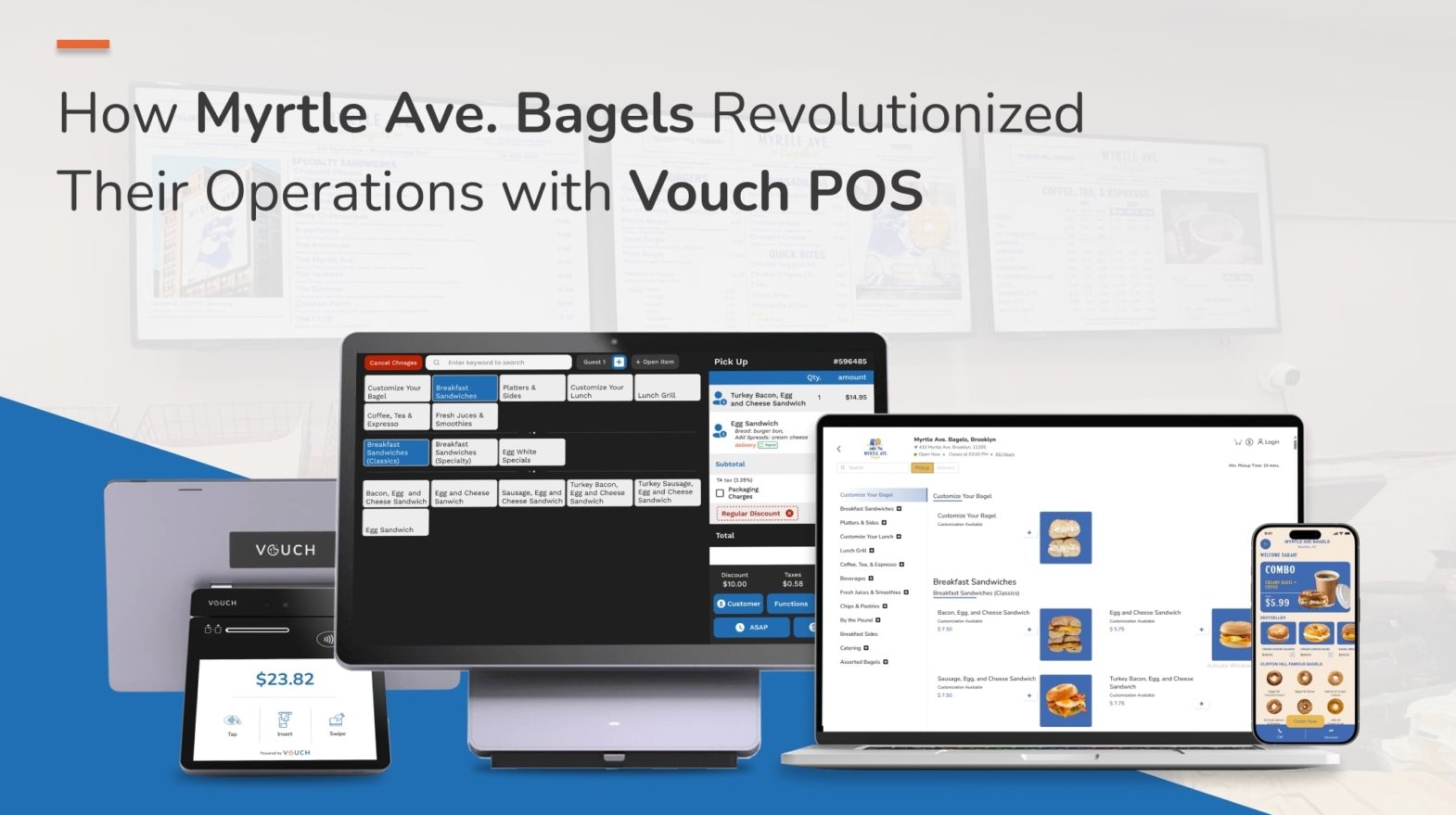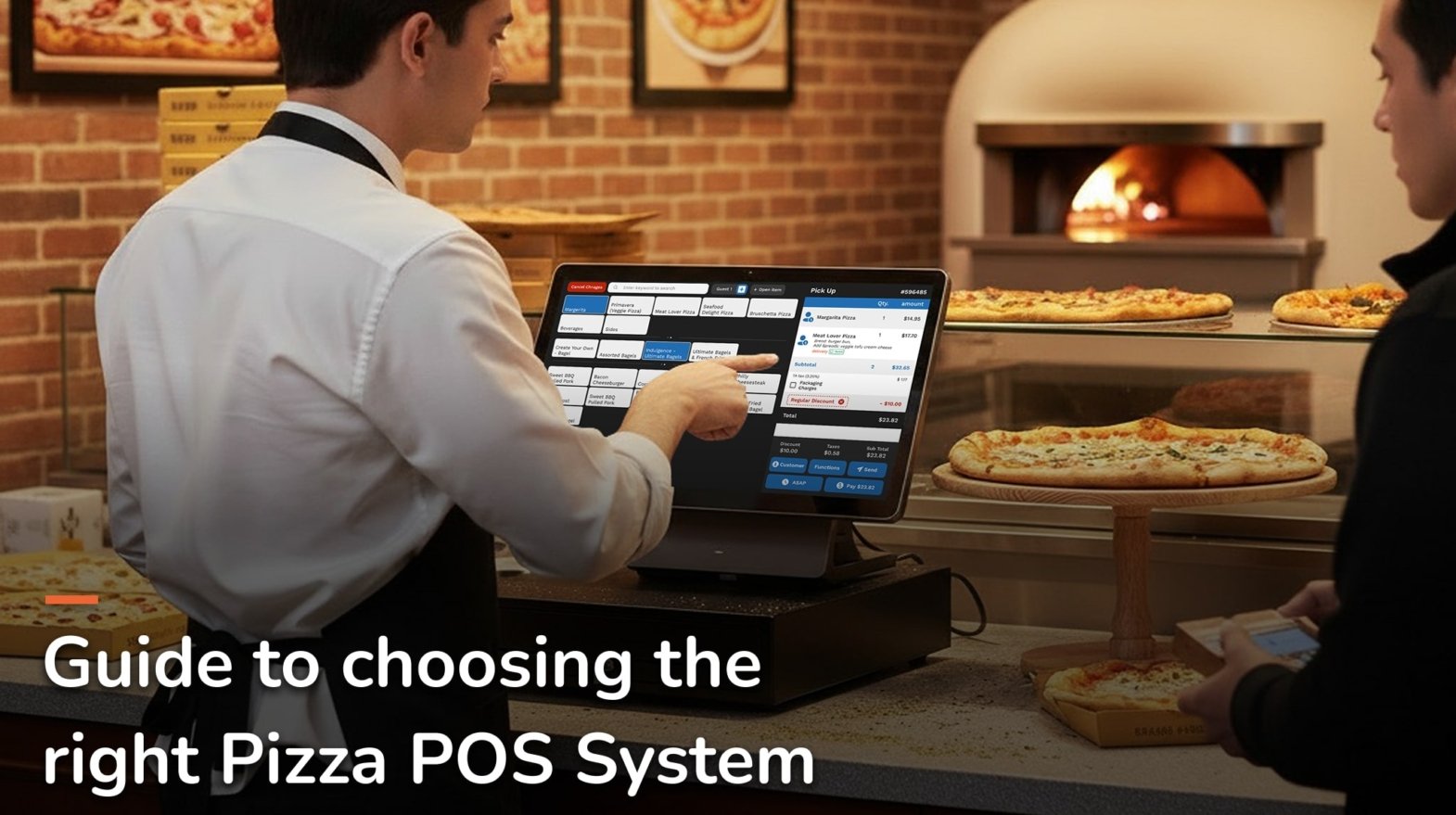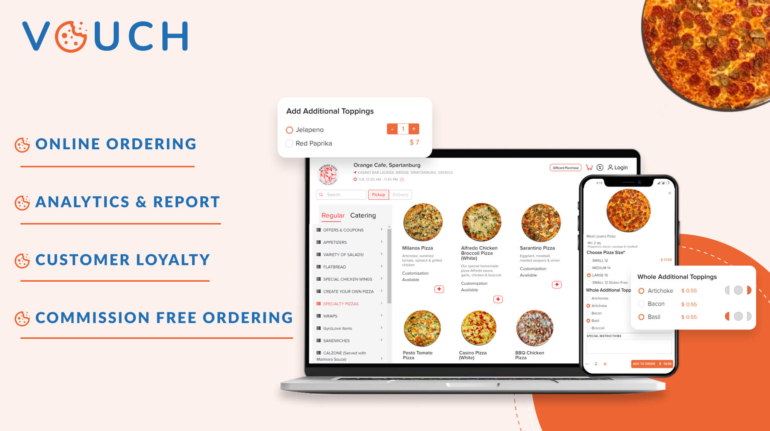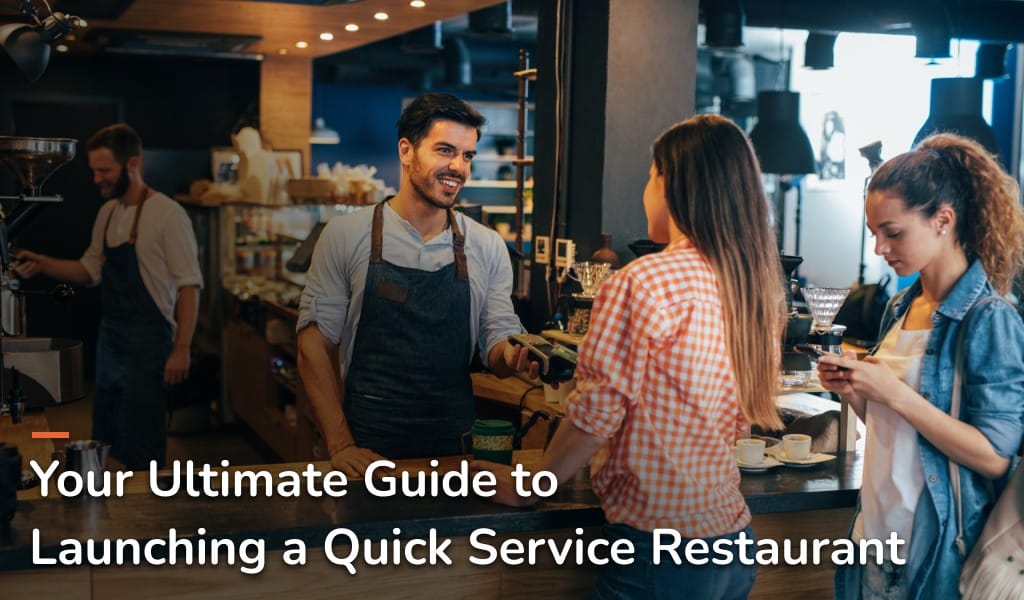
In This Post
- Understanding the Quick Service Restaurant Concept
- What Makes a Quick Service Restaurant Unique?
- Why Start a Quick Service Restaurant?
- From Concept to Table Your QSR Startup Blueprint
- Step 1 Conduct Market Research
- Step 2 Develop a Business Plan
- Step 3 Understanding Your Target Market
- Step 4 Finding Restaurant Equipment and Food Suppliers
- Step 5 Choose the Right Location
- Step 6 Design Your Menu
- Step 7 Invest in the Right QSR POS System
- Step 8 Build Your Brand
- Step 9 Marketing Your QSR
- Step 10 Hire and Train Staff
- Step 11 Optimize Operations
- Step 12 Monitor Financial Performance
Are you thinking about starting your quick service restaurant? You’re not alone!
The QSR industry is booming, and for good reason. People love the convenience of grabbing a quick bite without sacrificing quality. But where do you even begin?
Don’t worry – we’ve got you covered! In this article, we’ll walk you through everything you need to know, from choosing the perfect location to designing a menu that’ll keep customers returning for more.
The global quick service restaurant (QSR) market will continue to grow at a compound yearly growth rate (CAGR) of 5.00% between 2024 and 2031, according to the Cognitive Market Research Study.
Why should you think of investing in Vouch POS? Well, We’ll also explore why picking the right quick service restaurant POS system is important to succeed as a QSR owner in this blog which will answer all your doubts and help you run your restaurant seamlessly.
Understanding the Quick Service Restaurant Concept
When we talk about the QSR industry, we’re referring to a thriving segment of the food service market focused on delivering fast, affordable meals without sacrificing quality.
Iconic brands like McDonald’s, Chipotle, and Subway epitomize this concept, showcasing how a limited menu can lead to greater efficiency and quicker service.
For business owners and entrepreneurs looking to enter this dynamic market, understanding the core elements of QSRs is crucial.

Increase profits and serve guests better with Vouch POS
What Makes a Quick Service Restaurant Unique?
One of the most effective ways to increase your average check size is by implementing a robust quick service point of sale system. This technology streamlines operations and provides valuable insights that help you make better business decisions.
1. Streamlined Operations:
Quick service restaurants thrive on efficiency. By offering a limited menu that focuses on popular items, restaurants can simplify operations and reduce wait times. This streamlined approach not only enhances the customer experience but also allows staff to focus on delivering consistent quality.
2. Affordable Pricing:
One of the main attractions of QSRs is their affordability. By maintaining lower operational costs, quick service restaurants can pass savings onto customers, making dining out more accessible. This pricing strategy is particularly appealing to a broad audience, from busy professionals to families looking for a quick meal.
3. Speed and Convenience
Nowadays, consumers often prioritize speed and convenience. QSRs cater to this demand with quick service times, drive-thru options, and takeout availability. This focus on efficiency attracts customers who are on the go and need a meal that fits their busy lifestyles.
Why Start a Quick Service Restaurant?
Quick Service Restaurants offer numerous advantages for aspiring restaurateurs.
Their simplified menu options and efficient service models attract busy consumers, making them a smart investment.
In this ultimate guide on how to start a quick service restaurant, we’ll explore key benefits and provide essential tips on launching your own QSR. Whether you’re an expert chef or a passionate foodie, you’ll find the insights needed to succeed in the dynamic world of quick service dining.
1. Low Overhead Costs
One of the most compelling reasons to invest in a QSR is the significantly lower overhead costs compared to full-service restaurants. Quick service restaurants typically require less physical space and fewer staff members.
This reduction in staffing not only lowers labor costs but also simplifies training and management, allowing operators to focus on the customer experience.
2. Fast Service
In the QSR sector, speed is essential. Customers expect their meals to be prepared and served quickly.
Implementing a reliable QSR point of sale system is vital for maintaining this efficiency. A best quick service pos system streamlines order-taking, payment processing, and kitchen communication, ensuring that meals are prepared and delivered promptly.
3. Scalability
One of the most attractive features of successful QSRs is their ability to scale quickly. Many QSRs expand through franchising, allowing them to reach new markets without the significant capital outlay associated with opening full-service restaurants.
A well-designed quick serve point of sale system can facilitate this expansion by providing essential tools for inventory management, sales tracking, and customer engagement.
From Concept to Table: Your QSR Startup Blueprint

Step 1: Conduct Market Research
Before you invest time and money, understanding your target market is crucial. Start by conducting thorough market research. Identify your potential customers, their dining preferences, and the competition in your area.
Key Questions to Consider:
- What types of cuisines are trending?
- Who are your main competitors?
- What gaps can you fill in the market?
- What are the peak dining times for your target audience?
- How do your potential customers prefer to order (e.g., dine-in, takeout, delivery)?
- What social media platforms are most popular among your target demographic?
Step 2: Develop a Business Plan
A well-prepared business plan is your roadmap to success, guiding you through the complexities of launching and running your quick service restaurant. Here’s a detailed breakdown of the essential components:
1. Executive Summary
This section serves as a snapshot of your restaurant’s concept and goals. It should succinctly summarize your vision, mission, and unique selling proposition (USP). Outline what sets your QSR apart, whether it’s a distinctive menu, a unique dining experience, or a commitment to sustainability. Keep it engaging and concise, as this is often the first section potential investors will read.
2. Market Analysis
Use insights from your market research to identify your target audience and competitors. Analyze demographic data, dining preferences, and local food trends. Include information about the size of the market, growth potential, and any gaps that your QSR can fill. Discuss your main competitors, their strengths and weaknesses, and how your restaurant will differentiate itself in the marketplace.
3. Marketing Strategy
Outline your branding strategy, including your logo, color scheme, and messaging. Discuss your marketing channels, such as social media, local advertising, and promotions. Include plans for customer engagement, such as loyalty programs or special events. Highlight how you’ll measure the effectiveness of your marketing efforts.
4. Operational Plan
This section provides details on the day-to-day operations of your QSR. Outline your staffing needs, including roles, responsibilities, and training programs. Discuss your suppliers and sourcing strategies for ingredients and equipment. Include information about your restaurant layout, kitchen workflow, and service model (e.g., counter service, drive-thru). This plan ensures you have a clear understanding of how to run your restaurant efficiently.
5. Financial Projections
Provide detailed financial forecasts that cover expected costs, revenue projections, and funding needs. Include a break-even analysis to determine how long it will take to cover your initial investment. Outline your projected income statements, cash flow statements, and balance sheets for the first few years. If seeking funding, clearly specify how much capital you need and how it will be allocated.
Creating a comprehensive business plan not only helps you clarify your vision but also serves as a valuable tool for attracting investors and guiding your restaurant’s growth.
Importance of a QSR POS System in Your Plan
When outlining your operational plan, don't forget to highlight the importance of a quick service restaurant POS system. This technology will help streamline your operations, manage inventory, and improve customer service.
Step 3: Understanding Your Target Market
In the competitive landscape of the restaurant industry, understanding your target market is crucial. Your target market comprises the demographic and psychographic characteristics of your ideal customers.
Factors such as age, income level, dining preferences, and lifestyle choices play a significant role in shaping your restaurant’s concept and offerings.
Conducting market research helps identify trends and preferences within your target demographic. Utilize surveys, social media insights, and competitor analysis to gather data. By understanding what your customers crave, you can tailor your menu, ambiance, and marketing strategies to meet their needs effectively.
Moreover, knowing your target market allows you to select the right equipment and food suppliers that align with your vision.
For instance, a health-conscious clientele may require specialized cooking equipment or organic food sources, while a fast-casual restaurant might focus on efficiency and speed in both equipment and supply chain.
Ready to see how VouchPOS can transform your quick service restaurant? Schedule a free demo today and experience the benefits firsthand!
Step 4: Finding Restaurant Equipment and Food Suppliers
Finding the right restaurant equipment and food suppliers is crucial for your establishment’s success. Start by defining your needs based on your restaurant’s concept and menu. Research local and online suppliers, focusing on those with a solid reputation for quality and reliability. Attend industry trade shows and networking events to connect with vendors and discover new products.
Leverage online resources like supplier directories and customer reviews to gauge the reliability of potential partners. Don’t hesitate to ask for recommendations from fellow restaurateurs or industry associations. Consider both price and service; a slightly higher cost may be worth it for superior support and warranty options.
Once you’ve narrowed your options, request quotes and compare terms, ensuring they align with your budget and operational needs. Establishing strong relationships with suppliers can lead to better pricing and exclusive access to new products, ultimately enhancing your restaurant’s performance.
Reputable suppliers in New York that can help meet your needs
1. BH LA Restaurant Equipment Inc.
At B&H, you can find a wide range of restaurant equipment for buying and selling.
You’ll appreciate their 10,000 square foot showroom and warehouse, complete with on-site cleaning services and a technician ready to help. Plus, They offer an additional 20,000 square feet of offsite storage for your needs. With our business conveniently located and a loading dock available, you can rely on them to ship equipment all over the world!
2. NYC Restaurant Equipment Corp.
NYC Restaurant Equipment and Appliances offers a comprehensive selection of restaurant equipment tailored for the New York food service industry. With a focus on quality and affordability, they provide everything from kitchen appliances to small wares, ensuring you have the right tools to run your establishment efficiently. Their expertise in New York restaurant equipment makes them a reliable partner for any culinary business.
3. JCC Restaurant Supplies NYC INC.
JCC Supply is a leading provider of restaurant equipment and supplies, specializing in the needs of the food service industry. With a diverse range of products, including kitchen appliances, cookware, and small wares, they cater to restaurants, catering companies, and other culinary establishments.
Known for their commitment to quality and customer service, JCC Supply offers expert guidance to help you find the right equipment for your business. Their extensive inventory ensures that you have access to everything you need to operate efficiently and effectively.
By partnering with such reputable suppliers, you can equip your restaurant for success in the competitive New York market.
Step 5: Choose the Right Location
Location is one of the most critical factors in the success of your quick service restaurant (QSR). A prime location can significantly impact foot traffic, visibility, and customer accessibility. Look for high-traffic areas, such as shopping malls, busy streets, or office complexes.
Tips for Choosing the Perfect Spot:
- Foot Traffic: The more people pass by, the better your chances of attracting customers. Consider areas near popular attractions, schools, or transportation hubs to maximize exposure.
- Visibility: Ensure your restaurant is easily visible from the street or main thoroughfares. A well-placed sign can enhance brand recognition and attract walk-in customers.
- Accessibility: Confirm that parking facilities are available and that public transportation options are easily accessible. A convenient location encourages repeat visits.
- Demographics: Analyze the local demographic to ensure it aligns with your target market. Areas with high concentrations of your ideal customers will yield better results.
- Competitive Landscape: Assess the number of competitors in the vicinity. A healthy balance of competition can indicate demand, but too many similar offerings may dilute your customer base.
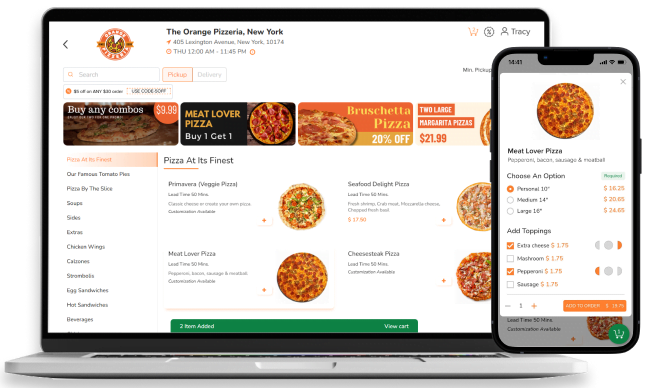
Take control of your profits. Elevate your business without the commission fees
Step 6: Design Your Menu
Your menu is the heart of your restaurant and serves as a powerful marketing tool. It should reflect your brand identity and cater to your target audience’s preferences. Aim for a limited but appealing menu that allows for quick preparation and service.
Menu Design Tips:
- Focus on Signature Items: Create a few standout dishes that can become your brand's identity. Signature items often drive customer loyalty and word-of-mouth referrals.
- Pricing Strategy: Ensure your prices are competitive while covering costs. Conduct market analysis to set prices that align with local trends.
- Incorporate Seasonal Items: Keep your menu fresh and engaging by rotating seasonal dishes.
- Dietary Options: Include vegetarian, vegan, gluten-free, and allergen-friendly options to cater to diverse dietary needs. This broadens your customer base.
- Visual Appeal: Invest in high-quality images and descriptions for your menu items. An attractive menu design can entice customers and influence their choices.
Step 7: Invest in the Right QSR POS System
Choosing the best quick service restaurant POS system is vital for your restaurant’s efficiency. A robust POS system will streamline your operations and enhance the overall customer experience.
Features to Look for in a Quick Serve Point of Sale System:
- Speed and Efficiency: Quick transaction processing is essential to reduce wait times during peak hours, improving customer satisfaction.
- Inventory Management: Real-time tracking of stock prevents shortages and helps manage food costs effectively.
- Reporting and Analytics: Gain insights on sales trends and customer preferences, allowing for data-driven decisions and menu adjustments.
- Customer Relationship Management: Tools to manage loyalty programs and gather feedback enhance customer engagement and retention.
- Mobile Capabilities: Consider a POS system with mobile functionality to facilitate tableside ordering and payment, enhancing customer convenience.

Streamline Your QSR Operations Today!
Vouch is the ideal system for quick service restaurant POS. Transform your service, boost efficiency, and enhance customer satisfaction with Vouch Restaurant POS - your go-to for fast and effective service!
Step 8: Build Your Brand
Your restaurant’s brand is more than just a logo; it’s the overall experience you provide. Create a strong identity that resonates with your target audience and sets you apart from competitors.
Elements of a Strong Brand:
- Unique Selling Proposition (USP): Identify what makes your QSR stand out. This could be a unique menu, exceptional service style, or inviting atmosphere.
- Consistent Messaging: Ensure your branding is consistent across all platforms, from signage to social media. Consistency builds trust and recognition.
- Engaging Visuals: Use appealing colors and designs that reflect your restaurant’s vibe. Attractive branding can entice customers and enhance their dining experience.
- Storytelling: Share your restaurant's story—how it started and your culinary philosophy. Personal stories can create an emotional connection with customers.
- Community Engagement: Participate in local events or sponsor community activities to strengthen your brand’s presence and goodwill in the area.
Step 9: Marketing Your QSR
A solid marketing strategy is essential to attract customers and build awareness for your QSR.
Effective Marketing Strategies:
- Local Advertising: Use flyers, posters, and local newspapers to reach your community. Partnering with local events can also enhance visibility.
- Loyalty Programs: Encourage repeat business by rewarding loyal customers with discounts or freebies.
- Email Marketing: Build an email list and send regular newsletters featuring promotions, new menu items, and upcoming events to keep customers informed and engaged.
- Collaborations: Consider collaborating with local businesses or influencers to expand your reach and attract new customers.
For more tips on boosting your revenue, check out our blog on Increasing Your QSR's Average Check Size
Step 10: Hire and Train Staff
The success of your QSR heavily relies on your team. Hire enthusiastic individuals who share your vision and values. A strong team enhances customer service and operational efficiency.
Training Tips:
- Comprehensive Onboarding: Provide thorough training on your menu, POS system, and customer service standards. Regular refresher courses can help maintain high service quality.
- Empower Your Team: Encourage staff to take ownership of their roles and foster a positive work environment. A motivated team is crucial for delivering exceptional customer experiences.
- Performance Feedback: Implement a system for providing constructive feedback and recognition. Regular evaluations can help staff improve and feel valued.
- Cross-Training: Train employees in multiple roles to ensure flexibility during busy times and reduce staffing shortages.
- Team Building: Organize team-building activities to foster camaraderie and improve teamwork, which can enhance overall service quality.
A study found that upselling can increase restaurant revenues by up to 20%. Investing in staff training can improve your restaurant's profitability immediately.
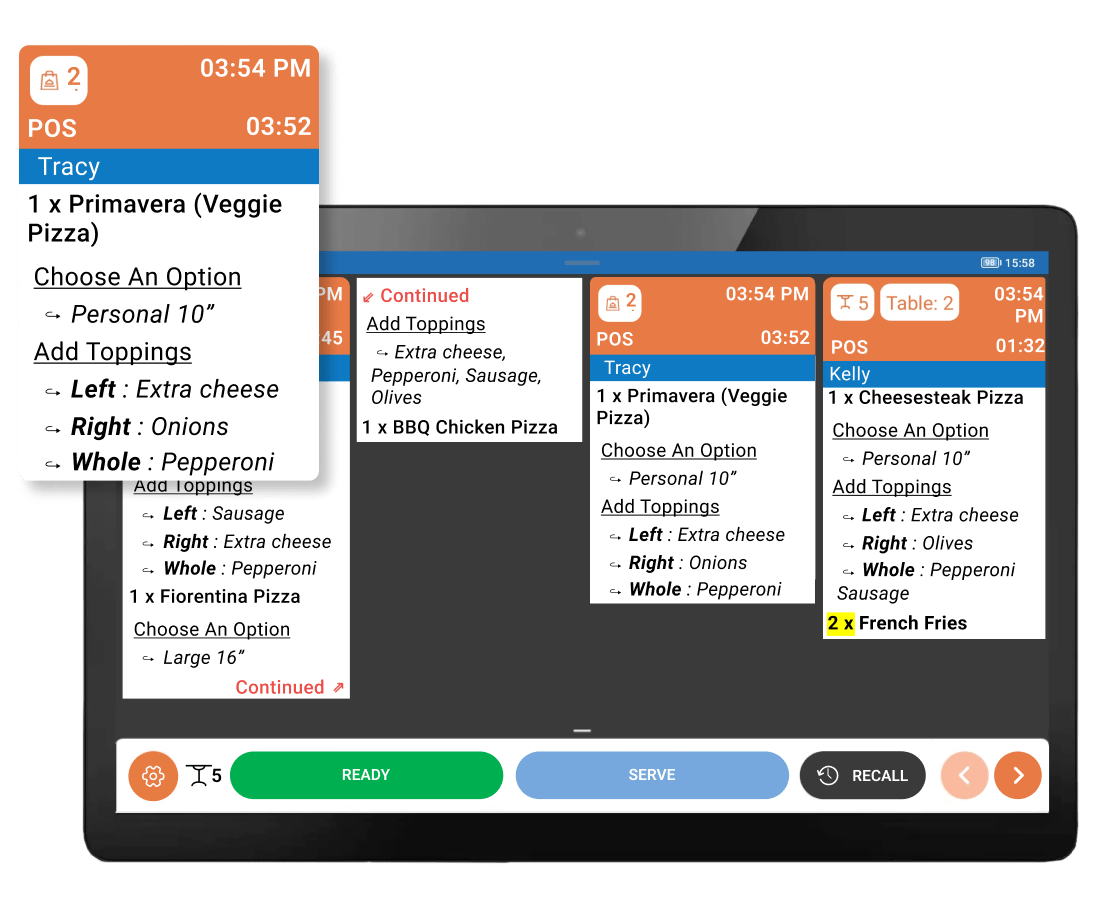
Help your kitchen staff prepare orders quickly
Step 11: Optimize Operations
Once your QSR is up and running, it’s crucial to continually optimize your operations for efficiency and customer satisfaction.
Tips for Operational Excellence:
- Regularly Review Menu Performance: Use your POS system's analytics to identify popular and underperforming items. This can guide menu adjustments and promotions.
- Gather Customer Feedback: Encourage reviews and suggestions to understand what works and what needs improvement. Actively responding to feedback can enhance customer loyalty.
- Streamline Processes: Look for ways to improve efficiency in food preparation and service, reducing wait times and increasing customer satisfaction.
- Technology Integration: Explore automation tools for inventory management, scheduling, and customer communication to save time and reduce human error.
- Continuous Improvement: Regularly assess operational procedures and make necessary adjustments based on feedback and performance metrics.
Step 12: Monitor Financial Performance
Keep a check on your restaurant’s financial health. Regularly review your expenses, sales, and profits to ensure you’re on track to meet your goals.
Key Financial Metrics to Track:
- Food Cost Percentage: Analyze how much you’re spending on ingredients versus how much you’re selling. Keeping this ratio in check is vital for profitability.
- Labor Cost: Monitor staffing costs to ensure you're within budget. Efficient scheduling can help reduce unnecessary labor expenses.
- Sales Trends: Identify peak times and adjust staffing and inventory accordingly. Understanding your sales patterns allows for better resource allocation.
- Customer Acquisition Cost: Track how much you spend on marketing per new customer. This helps evaluate the effectiveness of your marketing strategies.
- Net Profit Margin: Regularly calculate your net profit margin to ensure that your revenue covers all costs and contributes to profitability.
Remember, it’s not just about serving food; it’s about creating an experience that keeps customers coming back for more. So roll up your sleeves, embrace the challenge, and get ready to make your mark in the world of quick service dining!
Feel free to connect with us at info@vouchpos.com to set up a personalized consultation!

Smit Nebhwani is a tech entrepreneur with expertise in successfully building SAAS based products. Boasting over a decade of experience in the startup sector, he takes pleasure in sharing valuable insights on all facets of SAAS products. His extensive experience in the digital signage sector has established him as a reputable authority in the industry, and he channels this expertise through some valuable content. In his free time, Smit enjoys music, travelling and spending time with his family.
Connect directly with a Vouch POS tech expert. No sales pressure, just a casual conversation to see if we're a fit for your restaurant.

